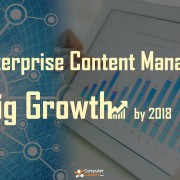IaaS vs. PaaS: Why the Debate Matters to You
Some say Infrastructure as a Service (IaaS) is the next big thing, while others argue Platform as a Service (PaaS) is emerging as the front runner. Meanwhile, the average consumer still has no idea what either of those things are.
Widespread Impact
But for anyone who works, uses a cloud-based service, or purchases a cloud-connected device like a home alarm system, the debate matters. The cloud hosting providers that house these systems in their data centers are certainly paying attention, with the results of the debate dramatically impacting their business models.
The difference, put simply, is this. With IaaS, the vendor offers a business a place to safely store its server data and the applications it houses. With PaaS, network storage is provided, as well as a platform for developing applications. For the average consumer, this likely won’t have ramifications to their day-to-day lives, but as the industry eventually settles into its eventual structure, the breakdown of IaaS, PaaS, and Software as a Service (SaaS) will likely have an impact on cost.
PaaS Absorption
Some experts now assert that PaaS is fading quickly, with its respective parts having been absorbed by IaaS and PaaS. However, other experts argue that PaaS is an essential service, with some of its elements necessary to supporting operations.
Businesses like Amazon Web Services are blurring the line between these areas, offering services that meet businesses’ needs as part of their IaaS or SaaS offerings. For consumers, the delineation won’t matter, since many businesses will request a model that provides precisely the features they need. However, when choosing between various service providers, some consumers may find that smaller providers that specialize in IaaS or SaaS fail to offer functionality that suits their app development needs. This will enable those businesses that offer a more full-service model the ability to win business away from their competitors.


Interesting way of looking at this. I think conmusption model is already well understood. All cloud customers are already moving to a forced SDN model by getting over the layer 2 limitation by adopting layer 3, you still need control plane, you can extract it from traditional switch and put it in a controller, if you do that for hyperscale env’s it creates a failure domain problem.I think the problem in tradiontal enterprise is not about SDN , its the migration path, for cloud the controllers are just not there to scale. Management is needed. Overall i think industry understands the conmusption models well. How do you go about the transition is the million dollar question .